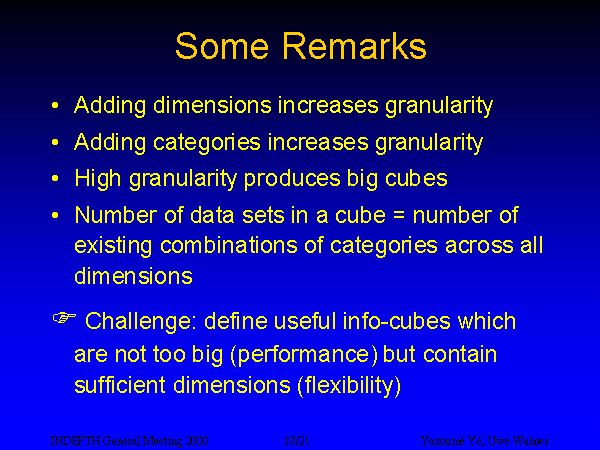
| Yé Y, Wahser U: "Using the Concept of Info-Cubes to Facilitate Data Analysis in Demographic Surveillance Systems" | ||
| Previous Slide | Index of Presentations | Next Slide |
| Table of Contents | ||

The granularity of an info cube is determined by
This is an important factor, which determines the the size of an info cube. On one hand, the number of potential output tables increases with higher granularity, but also the physical size of the cube, while the performance of the queries decreases.
The size of an info cube can be estimated by the multiplying the number of possible categories in each dimension.
Generally a choice has to be made between granularity and performance. Normally it is not usefull to have too many dimensions in a cube, or to include dimensions with too many categories, if the performance of the info cube queries is going down too much.
E.g. it might not be very useful to have info cubes with a granularity down to the individual. For dates, a granularity down to the month might be sufficient.
| Previous Slide | Show Current Slide | Next Slide |
| Table of Contents |
| This page was build by Uwe Wahser (uwe@wahser.de) Last Revision: July 2001 |